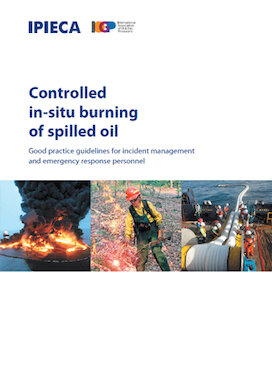In-situ burning (ISB) is the controlled combustion or burning of hydrocarbon vapours from spilled oil. ISB can rapidly remove oil from a land, snow, ice or water surface, and combusts it to mostly Carbon Dioxide and water. ISB can rapidly reduce the volume of spilled oil, and thus greatly reduces the need to collect, store, transport and dispose of recovered oil. ISB can also shorten the overall response time, thus aiding environmental recovery. This guide contains information about the in- situ burning of oil spills, including both the scientific aspects of the burning process and its effects. It also presents practical information on the procedures and equipment required for ISB operations.
Controlled in-situ burning of spilled oil

Related resources
- 9 July 2024
The Readiness Evaluation Tool for Oil Spills (RETOS™) aims to assist governments and companies in assessing their level of oil spill response planning and readiness management.
- 10 August 2023
An Incident Management System (IMS) is essential to optimizing response times and efficiency, providing clarity in command and control, improving resource coordination and communications, and facilitating the cooperation and integration of responding organizations.
- 10 August 2023
This document is aimed at those persons responsible for ensuring that oil spill contingency plans are practised and verified, providing guidance on constructing an exercise programme that is suitable for meeting an organization’s or facility’s requirements.
- 10 August 2023
This document identifies the principal health and safety issues when an oil spill occurs, their degree of severity and the practical steps to minimize the impact of the spill.



